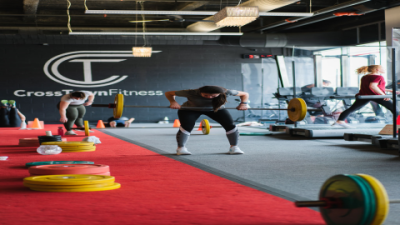When it comes to building a strong, impressive back, the latissimus dorsi — or simply the “lats” — is the muscle you really want to focus on. It’s that broad, sweeping muscle that gives your upper body that classic “V-shape” and is crucial for pulling movements. If you’ve ever wondered how to properly latissimus trainieren, you’re in the right place. This article dives into what the lats actually do, why they matter, and the best ways to work them out effectively. Whether you’re just starting out or have been lifting for a while, understanding your lats will help you get better results and avoid frustration.
First off, let’s talk about what the latissimus dorsi really is. It’s a huge, flat muscle that covers much of your mid and lower back. It starts from several spots — like the lower part of your spine, your pelvis, ribs, and even part of your shoulder blade — and all those fibers come together to attach to your upper arm bone. Because it’s connected in so many places, it’s involved in a bunch of movements: pulling your arm down or back, rotating it inward, and even helping lift your torso if your arms are fixed above you (think climbing or pull-ups). It also helps with breathing when you’re really pushing yourself.
So why bother training it? Well, a strong latissimus dorsi does more than just make you look good. It helps keep your posture in check — no more slouching or rounded shoulders — and it’s key for sports and activities that involve pulling or lifting. Plus, it gives you that broad, powerful back that looks great on anyone.

Now, onto the fun part: the exercises. There are a bunch of ways to train your lats, but some are definitely better than others. Here’s a quick rundown of the top moves that really hit the lat muscles:
| Exercise | Type of Movement | Main Muscles Worked | Why It’s Great |
|---|---|---|---|
| Pull-Ups | Vertical pulling | Latissimus dorsi, biceps, traps | Classic bodyweight move; builds width and strength |
| Lat Pulldown | Vertical pulling | Latissimus dorsi, biceps | Adjustable resistance; beginner-friendly |
| Bent-Over Rows | Horizontal pulling | Lats, rhomboids, traps, rear delts | Builds mid-back thickness and strength |
| Straight-Arm Pulldown | Shoulder extension | Latissimus dorsi | Isolates lats without bending elbows |
| Deadlifts | Compound lift | Lats, erector spinae, glutes | Full back strength and posture support |
| T-Bar Rows | Horizontal pulling | Lats, traps, rhomboids | Heavy loading for muscle mass |
Let’s break down a few of these because technique really matters here. Pull-ups, for example, are amazing — but they’re tough! If you’re new, don’t get discouraged if you can’t knock out a bunch right away. Focus on pulling your shoulder blades down and together before you start pulling yourself up. That little cue makes a huge difference in activating your lats instead of just your arms. And try to avoid swinging your body — it’s tempting, but it takes the work off your lats.
The lat pulldown machine is a great alternative if pull-ups feel out of reach. Just be careful not to pull the bar behind your neck — it’s a common mistake and can hurt your shoulders. Instead, pull the bar down to your upper chest in a controlled motion. And don’t lean back too far; keep your torso mostly upright.
Bent-over rows are fantastic for building thickness in your back. When you do these, keep your back straight and pull the weight toward your lower chest. Try to keep your elbows close to your body and squeeze your shoulder blades together at the top of the movement. Avoid jerking the weight or rounding your back — those mistakes can lead to injury.
One exercise that often gets overlooked is the straight-arm pulldown. It’s a cable machine move where you keep your arms straight and pull down, focusing on the lats without bending your elbows. It’s great for really isolating the muscle and feeling a deep contraction. Just make sure you don’t bend your elbows or use momentum.
Deadlifts might not scream “lat workout,” but your lats play a big role in keeping your back stable during the lift. When you set up for a deadlift, imagine you’re trying to “bend the bar” outward with your hands — this helps engage your lats and protect your spine. Just don’t let your shoulders round forward.
Finally, T-bar rows let you load up heavy and build serious mass. Keep your back flat and pull the bar toward your lower chest, just like with bent-over rows. This one’s great if you want to add thickness to your middle back.
So, how often should you be hitting these exercises? For most people, training your lats two or three times a week works well. That gives your muscles enough time to recover and grow. And don’t forget the mind-muscle connection — really focus on feeling your lats working during each rep. It’s amazing how much this simple trick can boost your gains.
Also, variety is key. Mixing vertical pulls like pull-ups and lat pulldowns with horizontal pulls like rows ensures you hit all parts of the lat muscle. And don’t neglect stretching! Tight lats can mess with your posture and cause discomfort. Simple stretches like overhead side bends or the child’s pose with a side reach can help keep your lats flexible and healthy.
Speaking of posture, your lats do more than just move your arms. They help stabilize your shoulder blades and spine, which means strong lats can actually improve how you stand and sit. Weak or tight lats can contribute to that dreaded slouch or “hunchback” look. So training and stretching them is a win-win.

FAQs About Latissimus Training
Q: How often should I train my lats?
A: Usually 2- times a week is enough. You want to give your muscles time to recover but still challenge them regularly.
Q: Can I train my lats without any equipment?
A: Absolutely! Pull-ups and inverted rows (using a sturdy table or bar) are great bodyweight exercises that work your lats well.
Q: What’s the difference between pull-ups and chin-ups?
A: Pull-ups use an overhand grip and target the lats more, while chin-ups use an underhand grip and bring the biceps more into play.
Q: How do I avoid shoulder pain when training lats?
A: Focus on good form, avoid pulling the bar behind your neck, and make sure you warm up your shoulders before training.
Q: Are lat pulldowns as effective as pull-ups?
A: They can be, especially if you use proper technique and enough weight. Pull-ups are great but not everyone can do them right away.

In case you want to keep track, here’s a quick overview of your latissimus dorsi:
| Aspect | Details |
|---|---|
| Location | Broad muscle covering mid and lower back |
| Origin | Lower spine, pelvis, ribs, scapula |
| Insertion | Upper arm bone (humerus) |
| Innervation | Thoracodorsal nerve (C6-C8) |
| Main Actions | Arm extension, adduction, internal rotation, trunk movement |
| Secondary Roles | Assists breathing, stabilizes scapula and spine |
At the end of the day, training your lats is about more than just looking good in a tank top. It’s about building strength, improving posture, and enhancing your overall movement. The key is to work smart — choose exercises that fit your level, focus on form, and keep challenging yourself. With patience and consistency, you’ll see your back transform into a powerful, functional, and impressive part of your body.
Got questions or want some workout ideas tailored just for you? Don’t hesitate to reach out — I’m here to help you get the most out of your lat training journey!



